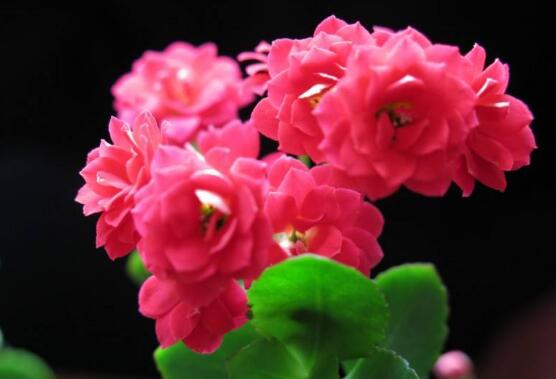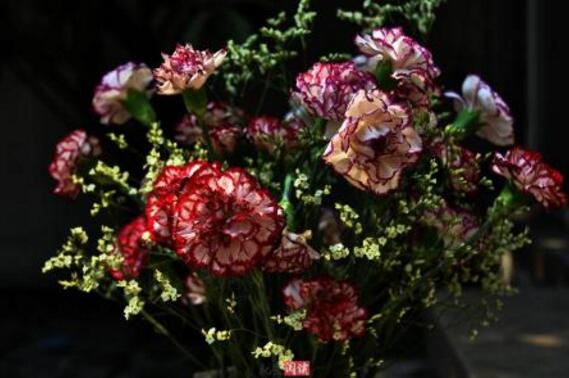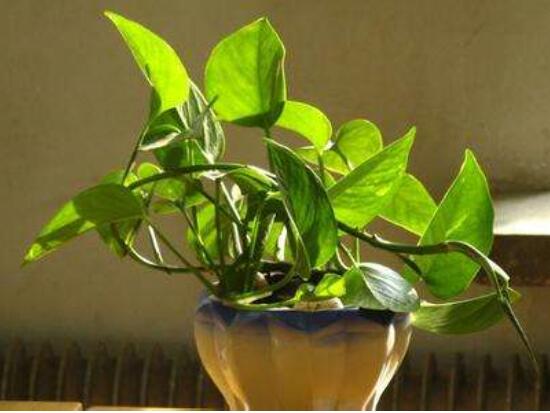For the control of common diseases and insect pests of longevity flowers, 4 major diseases and 4 major insect pests / careful care is the key.
In today's flower world, longevity flower can be said to be the most common one, it is not only easy to raise, but also beautiful, but also to improve the home environment. But in the process of breeding, many flower lovers will encounter a variety of problems, such as diseases and insect pests, what to do at this time? In fact, it is very simple to find the cause and solve the problem. The following is the prevention and control of common diseases and insect pests of longevity flowers arranged by Xiaobian. Go and learn about it!
I. Prevention and control of common diseases and insect pests of longevity flowers

In the culture methods of longevity flowers, we know that longevity flowers have relevant requirements for soil, light, water and so on. Once they are not up to the standard, there will be some diseases and insect pests. Because longevity flowers have been domesticated for many years, there are corresponding solutions to their diseases and insect pests. The following is the common pest control of longevity flowers. Flower friends must see it.
(1) four major diseases of longevity flowers and their control.
There are four main diseases of longevity flowers: leaf spot, black rot, mosaic virus and powdery mildew. As long as leaf spot and black rot are found early and treated in time, there is no big problem, but powdery mildew is a kind of fungal disease which is difficult to deal with. The following are the symptoms and solutions:
① leaf spot
Leaf spot disease mainly affects the long-lived leaves, the damaged parts of the leaves show brown spots, if not found in time, the spot area will expand into dark brown spots.
Prevention and control methods: carbendazim, chlorothalonil or methyl topiramate powder can be used to prepare an aqueous solution according to 1Ru 200 and pour it into a flowerpot, or you can use a spray can to spray the front and back of the leaves, once every three to five days, usually cured after three times.
② black rot
Black rot is also one of the diseases of longevity flowers, it is shown in the roots of longevity, plants in normal growth, suddenly blackened for no reason, and then quickly spread upward. As the blackened stem becomes soft, it is unable to support the upper branch, causing the branch to hang upside down, and the leaves will become soft and wrinkled. If it is not found in time, the upper branch will blacken and die in a few days.
Prevention and control methods: when you encounter this situation, flower friends do not worry, as long as you observe more and find the disease in time, you can cut off the blackened part of the root more than 1-2 cm, mix it with carbendazim, chlorothalonil or methyl thiophanate powder with water, soak the branches in the aqueous solution prepared by 1azol 200 for 2-3 hours, and then re-cut it with plain sand or vermiculite.
③ mosaic virus (Green Island virus)
Mosaic virus is the most common virus in longevity flowers, and it appears widely in modern hybrid varieties. The virus only occurs in the harsh growth environment, and is transmitted to the plant by severe root infection, showing that there are light green to yellow mosaic spots or patches on the leaves, the surface is uneven, and in serious cases, it will inhibit the growth of the plant. Romantic flowers and snow moon are most vulnerable to this virus.
Control method: cut off some branches, then remove the diseased leaves, and then soak the branches with carbendazim aqueous solution for about 5-6 hours for sterilization. Wait until the spirit of the leaves, and then move to the maintenance of astigmatism, wait until there are new leaves to be able to shine all day.
④ powder mildew
Powdery mildew is one of the diseases of longevity flowers, which mainly affects leaves and stems. The injured part shows a white powder shape, which is difficult to wipe off with hands and brushes, and the leaves of the injured plants are weak and stop growing, showing a diseased appearance, which makes them feel very distressed.
Control method: adjust the sulfur powder into paste with water, apply it to the damaged leaves and stems with a soft brush, and sprinkle some sulfur powder on the surface of the matrix, combined with watering to promote root absorption. A month later, a miracle occurred, the color of the powdery lesions in the leaves and stems became lighter and the lesions shrank. After continuing the treatment, the leaves also regained their luster, and then new branches were pulled out one after another, which was successful.
(2) four major insect pests of longevity flowers and their control
The pests of domestic longevity flowers are mainly leaf green insects, red spiders, aphids and scale insects. There are two control methods: artificial control and drug control. The specific symptoms and solutions are as follows:
① leaf green worm
The leaf green worm is large, about 1-2 cm, green flesh worm, the leaf green worm mainly attacks the long-lived leaves. When it is found that the leaves are translucent and there are some black silkworm-like feces between the leaves, there must be green, fleshy green worms, which are chewing on the long-lived leaves and enjoying the meal.
Prevention and control methods: in this situation, flower friends should be decisive, immediately get it down together with the leaves to destroy the OK, without medicine.
② red spider
Red spiders mainly invade the leaves. The red spider is small, about 1-2 mm, reddish brown. When you see that there are countless strands of white silk web between the leaves, you should be aware that it is the red spider. As long as you search carefully, it is not difficult to find its trail, and you can deal with it in time after finding it.
Prevention and treatment: often spray the plant will reduce the damage of red spiders. Red spider and leaf green worm, as long as found in time, almost without drug treatment can be solved, very simple.
③ scale insect
The main damage parts of scale insects are stems and leaves, and the leaves of the damaged plants are soft and dull, and they will feel sticky when touched by hands, which is the secretion of scale insects. It is small, about 1-2 mm, light yellowish brown in larvae and dark brown in adults, which is not easy to detect and can infect healthy plants if not found in time.
Control methods: when the number of scale insects is small, you can catch them by hand, or gently pick them off the affected parts with toothpicks. If the quantity is large, it is necessary to change the soil with a new basin, and then spray a broad-spectrum internal absorption type of insecticide (parachongling or one-pass cleaning, prepared according to 1Rule 200 with water) for treatment.
④ aphid
Aphids commonly known as greasy insects, it is very small, about 1 mm, black-green, winged, rapid reproduction, mainly infringing leaves, stems and top buds. Because the terminal buds of longevity flowers are the most tender, aphids like to eat there most, and the terminal buds are not easy to deal with by hand, which is a headache and a very thorny thing.
Prevention and treatment: omethoate 1 can be sprayed with 150 times solution. Omethoate is an internal type of broad-spectrum insecticide, which can be absorbed into the human body by the stems and leaves of the plant, and can be transmitted to the place where the liquid is not sprayed, so that the above harmful pests are poisoned to death and can be cured 1-2 times. When there are a large number of aphids, it is recommended to slowly irrigate the liquid once to put an end to the disease.
Disease and pest control of Jianlan 1. White silk disease
Symptoms: White silk disease mostly occurs in the plum rain season, which mainly harms the rhizome of the plant, causing the root to rot and die. There will be white colonies on the surface of the soil, and the plants will gradually lodge and wither.
Solution: after the disease, we should change the soil in time, sprinkle lime, wash and cut off the diseased plants, disinfect them, pay attention to ventilation, control the amount of water, and the plants will recover slowly.
two。 Scale insect
Symptoms: the main pests of scale insect Jian Lan are mostly caused by high temperature, humidity and airtight environment. Scale insects will harm the branches of Jian Orchid, making the leaves yellow and the branches withering.
Solution: you can choose omethoate 1000 times liquid spray, or rinse with clean water, rinse repeatedly for two or three times.
Jianlan winter care methods and pest control methods are introduced so much, Jianlan lively and beautiful, why not lovable? Let's hurry up and raise a basin.
Disease control of powdery mildew of Xiaoli flower
Symptoms: powdery mildew mainly affects the leaves, pedicels and buds of the plant. When the plant is sick, there is a round white powder layer on the plant, which causes the leaves to twist and wilt.
Prevention and control methods: powdery mildew is mostly born in autumn, and some diluted solution of anti-mycin can be sprayed when the disease occurs, which has a good control effect.
Brown spot disease
Symptoms: Brown spot is mainly infected leaves, with yellow spots, gradually expanding, and will produce black mildew on the surface of the leaves.
Control methods: the general plant disease will be in June to August, Bordeaux solution or chlorothalonil solution can be used for treatment.
The above is the treatment of Xiaoli after flowering. I hope the Xiaoli you take care of will be healthier and more beautiful.
- Prev

What to do with the growing insects of carnations? there are five major diseases and insect pests in carnations.
Carnations, needless to say, we should know each other, it can be kept at home as a scenery, given to the mother can express love and respect. With so many flowers, naturally many people choose to raise them, but in the process of breeding, there will inevitably be various conditions, such as illness or bugs, what about the carnations with worms?
- Next

How to do green radish long insects, green radish pest control detailed explanation (three strokes to solve green radish pests)
Green radish is one of the common green plants in the home, because green radish is good to raise and beautiful, so it is loved by people. Before we introduced the efficacy and role of green radish and green radish breeding methods and precautions, now let's take a look at green radish pest control. Any plant, if you don't control pests
Related
- Fuxing push coffee new agricultural production and marketing class: lack of small-scale processing plants
- Jujube rice field leisure farm deep ploughing Yilan for five years to create a space for organic food and play
- Nongyu Farm-A trial of organic papaya for brave women with advanced technology
- Four points for attention in the prevention and control of diseases and insect pests of edible fungi
- How to add nutrient solution to Edible Fungi
- Is there any good way to control edible fungus mites?
- Open Inoculation Technology of Edible Fungi
- Is there any clever way to use fertilizer for edible fungus in winter?
- What agents are used to kill the pathogens of edible fungi in the mushroom shed?
- Rapid drying of Edible Fungi

